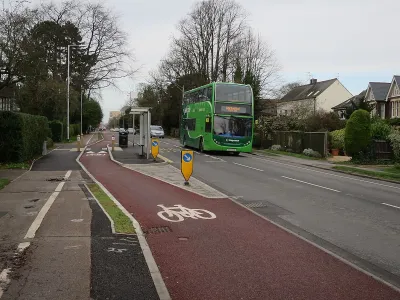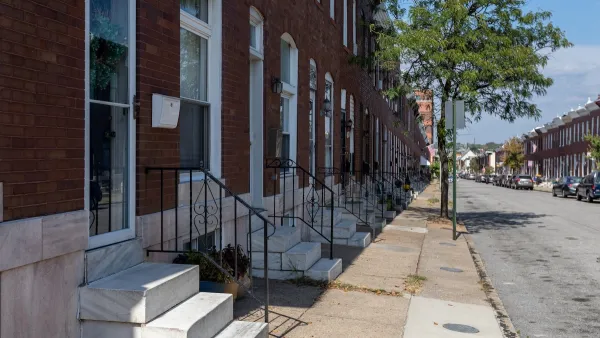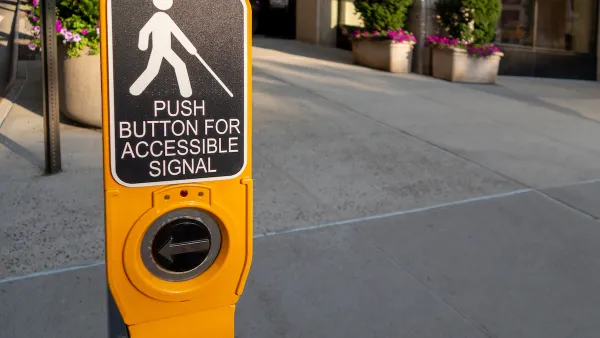Under the new rule, state and local governments would be required to adhere to a specific set of accessibility guidelines when designing, constructing, or altering pedestrian facilities in the public right-of-way, including transit stops.

The U.S. Department of Transportation has published a proposed rule to amend its rules implementing the transportation provisions under the Americans with Disabilities Act, according to an article in Smart Cities Dive. The rule would adopt pedestrian accessibility guidelines issued last year by the Architectural and Transportation Barriers Compliance Board into the department’s ADA regulations, making them a basis for enforcing standards. This is a big change because, according to Smart Cities Dive senior reporter Dan Zukowski, “Until now, state and local governments have been left to determine how to comply with the ADA’s mandate to make public pedestrian transportation facilities accessible to people with physical or mental impairments or a history of impairment.”
If adopted, the standards would apply to all new-construction or alterations to state and local government pedestrian facilities in the public right-of-way, including sidewalks, crosswalks, pedestrian traffic signals, transit stops, and on-street parking. The article calls out in particular the DOT’s concerns and requests for comment about the location of transit stops that overlap with vehicular lanes, including bicycle lanes, and put people with vision impairments or who use mobility aids like wheelchairs at risk of being struck. This is a frequent criticism by the disability community of “floating” bus stops that are separated from the curb by a bike lane. Public comment is open until September 23, 2024.
FULL STORY: US DOT proposes rule on pedestrian accessibility standards

Analysis: Cybertruck Fatality Rate Far Exceeds That of Ford Pinto
The Tesla Cybertruck was recalled seven times last year.

National Parks Layoffs Will Cause Communities to Lose Billions
Thousands of essential park workers were laid off this week, just before the busy spring break season.

Retro-silient?: America’s First “Eco-burb,” The Woodlands Turns 50
A master-planned community north of Houston offers lessons on green infrastructure and resilient design, but falls short of its founder’s lofty affordability and walkability goals.

Test News Post 1
This is a summary

Analysis: Cybertruck Fatality Rate Far Exceeds That of Ford Pinto
The Tesla Cybertruck was recalled seven times last year.

Test News Headline 46
Test for the image on the front page.
Urban Design for Planners 1: Software Tools
This six-course series explores essential urban design concepts using open source software and equips planners with the tools they need to participate fully in the urban design process.
Planning for Universal Design
Learn the tools for implementing Universal Design in planning regulations.
EMC Planning Group, Inc.
Planetizen
Planetizen
Mpact (formerly Rail~Volution)
Great Falls Development Authority, Inc.
HUDs Office of Policy Development and Research
NYU Wagner Graduate School of Public Service




























